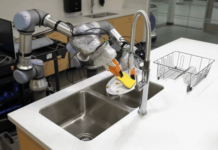Revolutionizing Surgery: How AI and Video Data Are Transforming Surgical Practices
In the ever-evolving field of medicine, artificial intelligence (AI) is playing a pivotal role in enhancing surgical safety and education. A significant development in this arena is the utilization of vast amounts of previously unused surgical video footage to power AI tools designed to improve surgical outcomes. The Surgical Data Science Collective (SDSC) stands at the forefront of this transformation by harnessing AI-driven video analysis to bridge the gaps in surgical training and practice worldwide.
On a recent episode of the NVIDIA AI Podcast, Margaux Masson-Forsythe, the director of machine learning at SDSC, shared insights into the unique challenges faced by their nonprofit organization in conducting AI research. The discussion shed light on how SDSC extracts valuable insights from extensive video data and explores ways AI can address the sobering reality that five billion people globally still lack access to safe surgical procedures.
The Potential of AI in Surgery
AI technology is gradually proving its capability to revolutionize healthcare by making surgeries safer and more efficient. The SDSC, through its innovative approach, is leveraging AI to analyze surgical videos, which allows for the extraction of critical insights that can drastically improve surgical training and practices. This initiative holds enormous potential to enhance the quality of surgical education and ensure that more individuals have access to safe surgical care.
Understanding the Challenges
Implementing AI in surgical practices is not without its challenges. One of the primary hurdles is the sheer volume of video data that needs to be processed and analyzed. This data, often unstructured, requires sophisticated algorithms to identify patterns and provide actionable insights. Moreover, the nonprofit nature of SDSC presents its own set of challenges, including limited resources and the need to collaborate extensively with various stakeholders in the healthcare sector.
The Role of SDSC in AI Research
As a nonprofit organization, SDSC approaches AI research with a unique perspective. Their focus is not just on technological advancements but also on making these advancements accessible and beneficial for global surgical practices. This involves experimenting with new models and approaches to stay ahead in the field, ensuring that the insights gained from video analysis are effectively translated into improved surgical techniques and outcomes.
Community Involvement and Future Prospects
SDSC encourages community involvement to further its mission of transforming surgical practices through AI. By inviting collaboration from researchers, healthcare professionals, and AI enthusiasts, SDSC aims to foster a community-driven approach to innovation in surgical data science.
For those interested in delving deeper into the future of AI in healthcare, the J.P. Morgan Healthcare Conference talk by Kimberly Powell, vice president of healthcare at NVIDIA, offers additional insights into the transformative potential of AI technologies in the medical field.
Exploring Related Innovations
The integration of AI in healthcare is not limited to surgical practices. Other organizations are making significant strides in using AI to enhance various aspects of medical diagnosis and treatment. For instance, Harrison.ai has developed an AI system called annalise.ai, which automates the analysis of radiology images. This system is designed to improve the speed and accuracy of diagnoses, thereby reducing the likelihood of misdiagnoses and improving patient outcomes. Additionally, the company is working on Franklin.ai to enhance histopathology diagnoses.
Similarly, Matice Biosciences, co-founded by regenerative biologist Jessica Whited, is utilizing AI to study tissue regeneration capabilities in animals like salamanders and planarians. The aim is to develop treatments that enable humans to heal from injuries without scarring, showcasing the vast potential of AI in regenerative medicine.
Caristo Diagnostics is another example of AI innovation in healthcare. They have developed Caristo, an AI-powered solution that detects coronary inflammation in cardiac CT scans by analyzing radiometric features in surrounding fat tissue. This technology aids physicians in formulating better treatment plans and making more accurate risk predictions.
Conclusion
The integration of AI into healthcare, particularly in surgical practices, represents a significant leap forward in medical technology. Organizations like the Surgical Data Science Collective are at the helm of this transformation, using AI to unlock the potential of vast video datasets to improve surgical safety and education. As AI continues to evolve, its impact on healthcare is expected to grow, offering new possibilities for improving patient outcomes and access to quality medical care.
For those intrigued by the potential of AI in healthcare, subscribing to the AI Podcast can provide regular updates and insights from leaders in the field. Available on platforms such as Amazon Music, Apple Podcasts, Google Podcasts, Spotify, and more, the podcast is an invaluable resource for anyone interested in the cutting-edge applications of AI in medicine.
For more information on the Surgical Data Science Collective and their initiatives, visit their official website.
For more Information, Refer to this article.


































